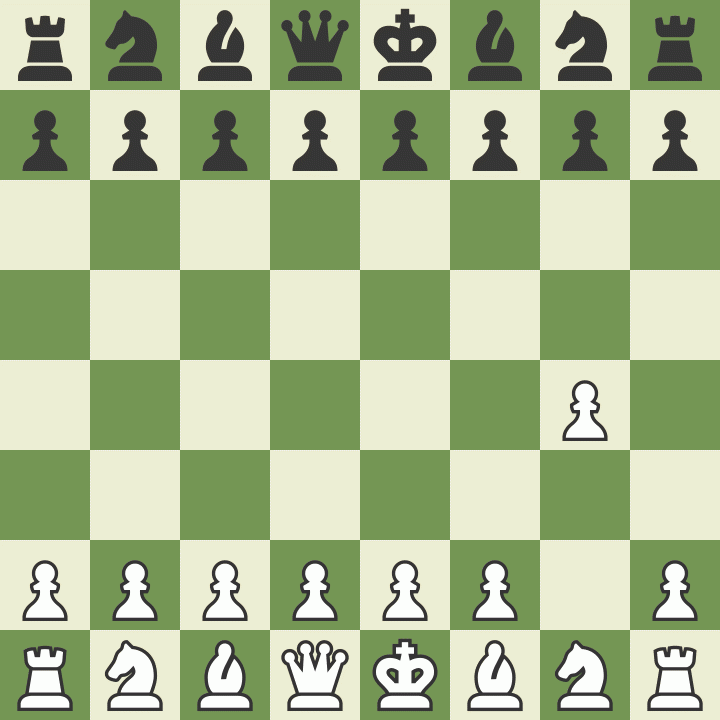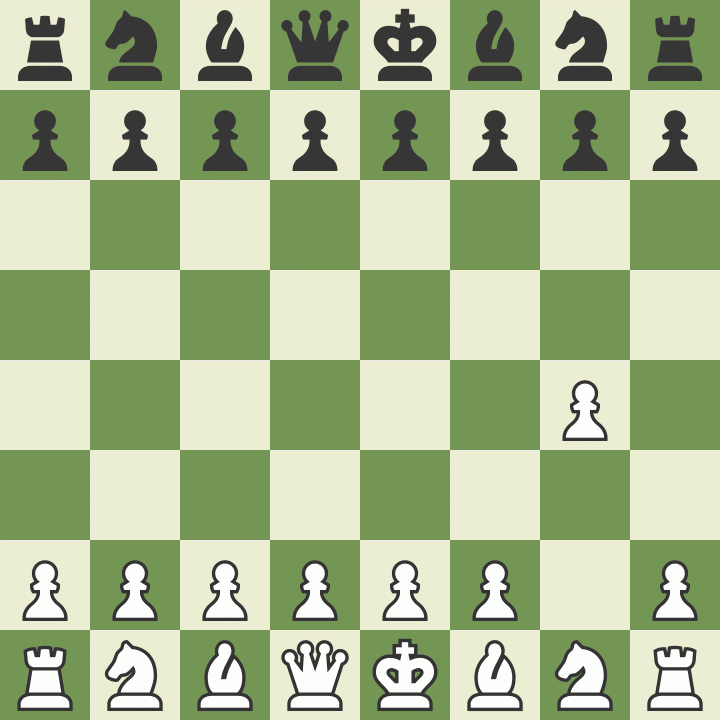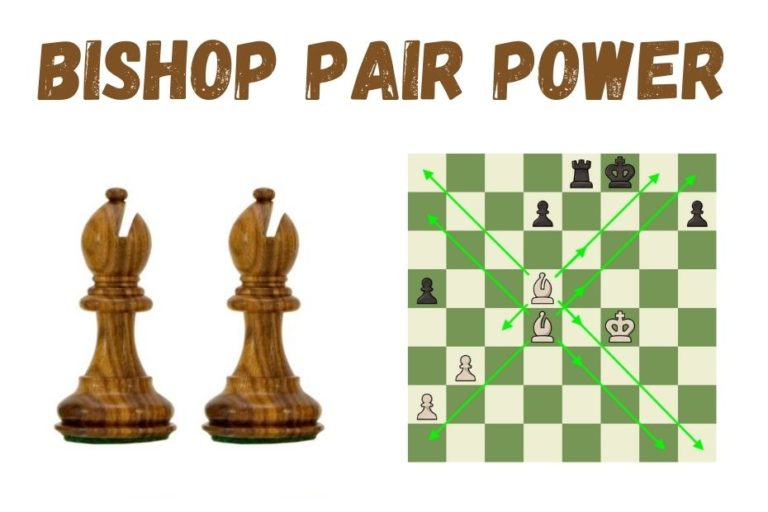The Grob Opening in Chess: An Unconventional Chess Opening
⭐⭐⭐ Take 6 minutes to read and improve your chess game ➡️ : This article was first published on, and is Copyright of Chessquestions.com
The Grob Opening in chess is not a common opening, but it can be very effective if the opponent plays incorrectly but the fact remains that the Grob opening is probably one of the worst openings that you can play, it is so bad that you can almost never see it in an elite chess tournament.
One of the worst openings you can make in Chess is when white begins 1. g4, known as the Grob opening
This article will teach you everything you need to know about the Grob opening, including its history and how to play it (spoiler alert you probably shouldn’t play it!). However, it is important to understand why you shouldn’t play it so it can apply to other opening principles.
1. What is the Grob opening and why is it unconventional?

The Grob opening in chess is characterized by 1.g4; considered an unconventional opening, Grob doesn’t achieve the desired opening principle for white of controlling the center nor aid in piece development; additionally fracturing solid pawn structure making kingside castling options less viable.
If you have picked up any fundamental chess opening book you would realize that center control is very important, it is the basis of a lot of openings. 1. g4 couldn’t be much further from the center of the board, it is controlling the side which is not that important early in the opening.
Apart from this, it has already dismantled white’s pawn structure in the kingside when castling kingside is an important aspect of playing the opening. By playing 1.g4, the position for white wouldn’t make it possible to castle kingside, this means that the king is either to stay in the center (where it is not safe) or only castle queenside (which is predictable).
Benefits of Grob Opening
The benefits of using the Grob attack in chess games, are few and far between. Certainly, at the Elite level, it is rarely seen given how unsound it is, but can be useful at an amateur level and in rapid games with tight time control due to black not expecting it, and delaying in trying to figure out what is going to happen next.
Disadvantages of Grob’s Opening
An immediate weakening of the Kingside for white, limiting short casting opportunities, whilst if black knows how to respond, white will be likely to lose against a good opponent before the game even begins in earnest.
Black’s best response to 1.g4
1…d5 is the most popular response to the Grob attack and is played around 67% of the time. While 1…e5 is equally as successful for black in analyzed games, it is used only 20% of the time.

Variations of Grob
One move doth not make a game of chess, and indeed, there are many ways things can go from the Grob opening, let’s take a look at some variations.
Grob Gambit Accepted
Moves: 1.g4 d5 2.Bg2 Bxg4.
The Gambit is not protecting the initial pawn move, most commonly played by Fianchettoing the Kings Bishop after Black plays 1…d5
When the pawn is accepted by the light-squared bishop, black does open up to the various traps associated with the opening, but well-versed players can still make the most of the advantage afforded the black pieces

Grob Gambit Declined
Moves: 1.g4 d5 2.Bg2 c6
Declining the Gambit with further pawn development, protecting d5, and canceling out white’s light-squared bishop is the preferred option.

Other Names for the Grob Opening
The Grob attack or opening was named after Henri Grob who used it extensively in correspondence chess and referred to it in his newspaper column and in several chess books he wrote. He didn’t coin the phrase Grob opening, of course, rather using the name ‘Spike opening’ instead.
As with many offbeat openings in chess, it has other names too.
Ahlhausens Opening
One of the first to play the opening in chess records, Carl Ahlhausen from Germany is also credited with the opening term at times.
Genoa or San Pier D’Arena Opening
Savielly Tartakower has a number of systems, defense, or opening connotations in chess, preferred to call 1.g4 after the place he first played to opening move.
Fric’s Opening
In Eastern parts of Europe, primarily the Czech Republic or Slovakia, the initial 1.g4 move is known as Fric’s opening
Kolibri’s Opening
In other areas of the world, the opening has been noted as being known as Kolibris Opening.
Whatever we choose to call it, it remains a weird opening in chess, rated along with Barne’s opening as one of the worst you can make playing first as white and is very rarely seen in elite chess today.
2. How do you play the Grob opening, and what are its strengths and weaknesses?
The Grob attack is not recommended due to the many weaknesses that it has, its strength would only be that 1.g4 can lead to an early pawn storm to the enemy kingside. Apart from this, there isn’t much strength in playing Grob’s attack, its weaknesses include the lack of control in the center and the dismantling of the kingside.
Also, it doesn’t help the fact that it is significantly harder to develop the pieces this way, playing 1. e4 for example allows white’s light bishop to already enter the game. Playing 1. g4 not only hampers the development of white’s light bishop but also opens the diagonal to the h1 rook, this can be taken advantage of by black.
In order to play the Grob, you should castle queenside as soon as possible and avoid falling for early attacks, stay on the defensive and focus on castling queenside first. Its strength is the fact that it already pushes a pawn on g4 which can lead to an early kingside pawn storm, the disadvantage is that white’s kingside is weakened permanently.
3. When should you use the Grob in chess?
As much as possible it is generally recommended to never use the Grob opening under any circumstances, objectively it is a bad opening and there are better moves for you to choose from. One exception to this might be if you are still rated quite lowly, are investigating openings, and play a lot of rapid chess, in 5 minutes or fewer games.
In these circumstances, if you have learned your best options in the Grob well, you may be able to take your opponent off-guard and force them into making central mistakes you can jump on.
This sounds like a ludicrous situation to play Grob’s attack, but it couldn’t be helped since it is so bad that it would only give you a disadvantage. This is why it is only useful for trolling your opponent or providing some sort of a handicap, basically situations where you would willingly want to put yourself at a disadvantage.
How many times have you seen the Grob opening in the super grandmaster level? almost never right? the only memorable ones are when Magnus Carlsen plays banter on lichess (mock games where he plays the bongcloud along with the Grob opening). This tells you a lot about the quality of this opening and why it is something to avoid in most situations, the only exception is if you want to troll your opponent.
4. What are some of the most famous Grob Attack games in chess history?
There are only a handful of famous Grob opening games in history (to no one’s surprise), the first one was played by Grob himself against Wiedemeier in 1965:
Grob vs Wiedemeier 1965

Played by Grob himself this game is a testament to how Grob’s attack can be aggressive if the opponent plays it incorrectly, this game is full of inaccuracies by black. This allows white to have a good game where the black king has been chased away into the center, this is a good game to analyze how to not play against the Grob.
Bloodgood vs Davis 1973
Another famous “Grob” game is the one between Bloodgood and Davis in 1973, although not played by Grob himself it is still a good game.

This opening is interesting and something that can occur if black decides to play the 1.g4 capture using black’s light square bishop, it teaches how you can control the center (artificially) in the grob opening. It also features an interesting trap that can be useful in this line.
Conclusion
Grob’s attack is a terrible choice for an opening since there are so many other better options, almost everything about it is against the very fundamentals of chess openings. It doesn’t control the center and weakens the kingside so early in the game, white will have a harder time recuperating the losses by playing the Grob opening.
There is a reason why it is almost never played in the super grandmaster level, the disadvantage is enough for an enemy super-grandmaster to convert. It is recommended by many chess masters to avoid this opening, thank you for reading.






